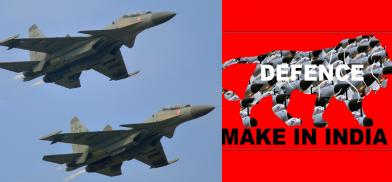India's moves towards military self-reliance
Two years after asking global companies to submit proposals to supply 114 combat aircraft in the world’s biggest warplane contract, India plans to switch to India-made fighter jets

Two years after asking global companies to submit proposals to supply 114 combat aircraft in the world’s biggest warplane contract, India plans to switch to India-made fighter jets. On 14 May 2020, Chief of Defence Staff (CDS), General Bipin Rawat, said in an interview in New Delhi that to boost the capability of its aging combat aircraft fleet, Indian Air Force (IAF) is finalising plans to induct the indigenously-made Light Combat Aircraft (LCA), Tejas.
When asked about the global tender for jets, he explained that India will buy an additional 83 jets, apart from an earlier deal for 40 aircraft, for $ 6 billion. This decision is going to disappoint Boeing Co, Lockheed Martin Corp and Saab AB, who were trying to bag the $15-billion order and another sign that India does not want to purchase expensive foreign weapons/defence equipment, plagued by bureaucratic delays and a funding crunch.
Prime Minister Narendra Modi is reported to have stressed the need to buy products made in India to boost an economy battered by the Covid-19 outbreak. Gen Rawat opined that the induction of jets will help India emerge as a key defence exporter due to its “relatively low price.” It was later reported that this came as a surprise to IAF and the industry.
Four days later, on 18 May 2020, it was reported that the IAF Chief, Air Chief Marshal R.K.S. Bhadauria, contradicted the CDS by stating that the list of aircraft planned to be inducted by the IAF includes 36 Rafales, 114 multirole fighter aircraft, 100 advanced medium combat aircraft (AMCA) and over 200 LCAs in different variants. Interacting with news agency ANI, Bhadauria stated: “This project (114 jets) is in the middle-weight and is in the Rafale class. In this issue, we will deal with it in the Make in India region, with an increase in FDI, with support to the private sector. I think in future this will bring in technology which is required to support the aviation sector. I think it is important to have another generation of aircraft in terms of capability, technology as we go along (sic)”.
Sources in media clarified that 114 jets cannot be replaced by the 83 LCA as the two fighters are of different classes. “The IAF projections take into account the 83 LCA Mk 1A, Rafale, the 114 foreign fighters under Make in India, and even the AMCA,” a source is reported to have said. Another source, who was involved in the negotiations for 83 LCAs, said it was wrong to mix up two separate programmes.
Air Chief Marshal Bhadauria also said IAF is planning to acquire 450 fighter aircraft for deployment on the northern and western frontiers of the country over the next 35 years. However, there still seem to doubts about the IAF achieving its sanctioned strength of 42 squadrons by 2042. The best-case scenario is if IAF inducts the Tejas Mark 2, the AMCA and 114 fighter aircraft, for which a request for proposal is still awaited.
The process to buy fighter jets started more than a decade ago. India scrapped a long-awaited order with Dassault Aviation for126 Rafales worth $11billion in 2015, but has since bought 36 of the planes to speed replacement of older aircraft. In April 2018, India floated a global tender seeking responses from global manufacturers to purchase 114 jets. The deal attracted initial offers from global giants like Boeing, Lockheed Martin and Sweden’s Saab AB and the Russian-made Sukhoi Su-30Mk I and Su-35.
At least 85 percent of production was to be in India, according to the initial document. While New Delhi is the world’s third biggest military spender, its air force, navy and the army are still equipped with weapons that are largely obsolete. Soon after taking over as the Prime Minister in 2014, Narendra Modi had clearly stated his aim of reducing India’s dependence on foreign-made weapons. While that is just as well, the process is one which is going to take time and till IAF will have to continue defending India’s borders with China and Pakistan with its current holding of 31 squadrons - 11 short of its requirement of at least 42 squadrons of fighter aircraft.
Aiming to boost domestic defence and aerospace manufacturing, Defence Minister Rajnath Singh on 14 May 2020, approved the launch of the Defence Testing Infrastructure Scheme (DTIS) with an outlay of Rs 400 crore (Rs. 4 billion) for creating a state-of-art testing infrastructure for military aviation. The Scheme, planned to run for a duration of five years, envisages to set up six to eight new test facilities in partnership with private industry. This will facilitate indigenous defence production, which will consequently reduce imports of military equipment and help make the country self-reliant. The projects under the Scheme will be provided with up to 75 percent government funding in the form of Grant-in-Aid.
The remaining 25 percent of the project cost will have to be borne by the Special Purpose Vehicle (SPV) whose constituents will be Indian private entities and state governments. The SPVs under the Scheme will be registered under Companies Act 2013 and shall also operate and maintain all assets under the Scheme, in a self-sustainable manner by collecting user charges.
The equipment/systems tested will be certified as per appropriate accreditation. While majority of test facilities are expected to come up in the two Defence Industrial Corridors (DICs), the Scheme is not limited to setting up test facilities in the DICs only. The DTIS Guidelines have been uploaded on the MoD/DDP and DGQA websites and can be accessed at the link: https://ddpmod.gov.in/sites/default/files/pdfupload/DTIS%20Guidelines.pdf
(The writer is former Indian Army and Ministry of Defence spokesman. The views expressed are personal. He can be contacted at wordsword02@gmail.com)









Post a Comment